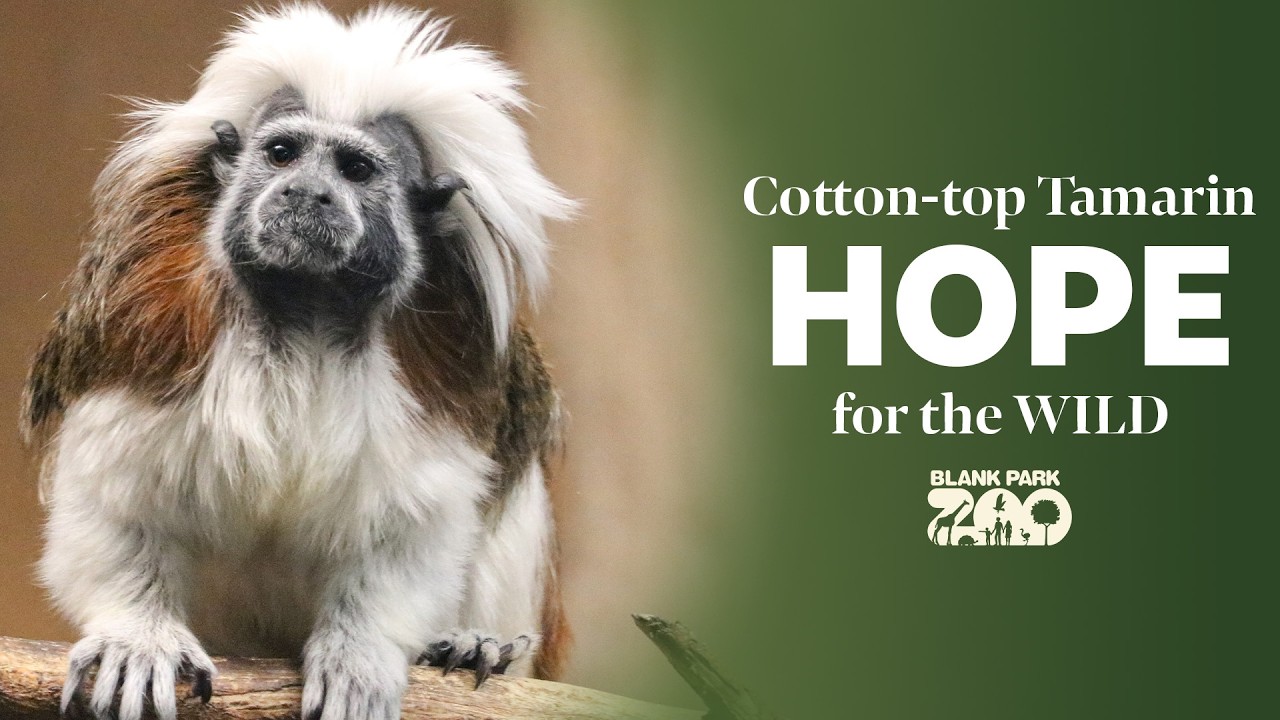- Understanding the Cotton-top Tamarin: Biological Characteristics and Habitat
- Importance of Conservation Efforts and Current Threats to Their Survival
- Role of Wildlife Sanctuaries and Zoos in Preserving the Cotton-top Tamarin
- Engaging the Public for Conservation through Educational Programs and Awareness
- The Impact of Cutting-edge Research and Technology on Tamarin Conservation
Cotton-top tamarins are small primates with a significant ecological role and striking visual appearance. Their distinctive white crests, covering their head like a soft cotton cloud, lend these creatures their unique name and have captured the fascination of both scientists and animal enthusiasts alike. Native to the tropical forests of northwestern Colombia, these tamarins typically inhabit both primary and secondary forests, relying on the dense canopies for shelter, food, and social dynamics. As arboreal creatures, they navigate the treetops with grace, demonstrating extraordinary acrobatic skills essential for their survival.
These diminutive monkeys, weighing merely about a pound, play a crucial role in the ecosystem. They assist in seed dispersal through their diet, which consists mainly of fruits, insects, and nectar, thus contributing to forest regeneration. They live in communal groups ranging from three to 15 individuals, each with a complex social structure, illustrating a broad spectrum of behaviors including grooming, vocal communication, and cooperative care of offspring. Their monogamous breeding pairs embark on a shared parental journey, with all members of the troop participating in nurturing the young, a remarkable aspect of their social organization.
Despite their ecological significance, cotton-top tamarins face numerous threats that challenge their survival. One of the primary drivers of their declining population is habitat destruction due to deforestation, primarily for agricultural expansion and urban development in Colombia. Such activities fragment their habitat, isolating populations and hindering genetic diversity. Additionally, the illegal pet trade has significantly contributed to their endangered status, as these primates are often captured for their captivating appearance.
Given these challenges, international conservation efforts have become paramount to securring the cotton-top tamarin’s future. Organizations in conservation biology and environmental health have developed strategies to mitigate these threats. Initiatives like establishing protected areas, promoting reforestation projects, and enforcing stringent anti-poaching laws are gaining momentum. Furthermore, working at grassroots levels to encourage local communities to participate in conservation actions has shown promising results.
Wildlife sanctuaries and zoos have assumed an increasing role as beacons of hope for cotton-top tamarins. These institutions provide environments where tamarins are sheltered from the perils of their natural habitats while ensuring their physical and psychological well-being. Managed under strict guidelines, these enclaves are not just homes but places of continuous research and observation, offering insights into the primates’ health and social behavior. Zoos worldwide have implemented breeding programs, significantly contributing to the maintenance of genetic diversity and increasing tamarin numbers, which are essential for any future reintroduction plans.
Some worldwide sanctuaries, like Hope for the WILD, focus on the direct involvement of the public to bolster conservation efforts. By providing platforms for researchers and audiences to connect, these centers demystify scientific knowledge and cultivate an understanding of the cotodlm-top tamarin’s plight. Interactive exhibits, guided tours, and educational outreach programs allow audiences to witness the life of these tamarins beyond television screens. Such experiences can significantly influence public perception and foster a deeper appreciation for conservation efforts.
Education plays a pivotal role in rebuilding ecosystems and advancing hopes for conservation. Informative campaigns and workshops conducted at wildlife centers aim to educate locals and international visitors about the significance of the cotton-top tamarin. Engaging schools and communities instills an environmental ethic that champions the protection of these primates. Moreover, by highlighting the interconnectedness of tamarins to the broader ecosystem, these efforts nurture a generational legacy of environmental stewardship.
Cutting-edge research and technology now offer conservationists new tools to counteract the challenges faced by the cotton-top tamarin and similar endangered species. Genetic studies open pathways for understanding tamarin hereditary traits and variations. This knowledge could lead to improved breeding programs and the development of genetic databases that enhance conservation planning. On-the-ground initiatives, involving satellite imaging and geographic information systems (GIS), offer precise data on habitat change, helping researchers and policymakers make informed decisions.
Moreover, tracking collars have evolved to be minimally invasive, providing real-time data on tamarins’ movement patterns and social associations. This information enriches our understanding of their ecological needs and assists in habitat management. Public-private partnerships continue to pave the way for implementing technologies that can actively monitor and conserve these dwindling populations.
The plight of the cotton-top tamarin stands as a microcosm of broader environmental challenges. The journey to their preservation requires a collective undertaking that spans research, education, technology, and community engagement. The story of these tamarins becomes not only a call to safeguard one primate but also an emblematic drive to reinforce the importance of biodiversity and harmony with nature. Through persistent efforts in conservation, both in the wild and controlled environments, the prospects for the cotton-top tamarin can be transformed from endangered to thriving. Such progress would resonate across the ecological spectrum, reiterating the delicate yet enduring symbiosis shared between all creatures within our global community.
*****
Source Description
Join us for a virtual event that will tell the conservation story of the cotton-top tamarin. HOPE for the WILD highlights the work Blank Park Zoo does to protect and understand cotton-top tamarins. Understanding the world around us and finding ways to work together is the first step to save animals and habitats in the wild.
Merchandise: https://www.bonfire.com/org/blank-park-zoo-421171821/
Donate/More Information: https://www.blankparkzoo.com/


